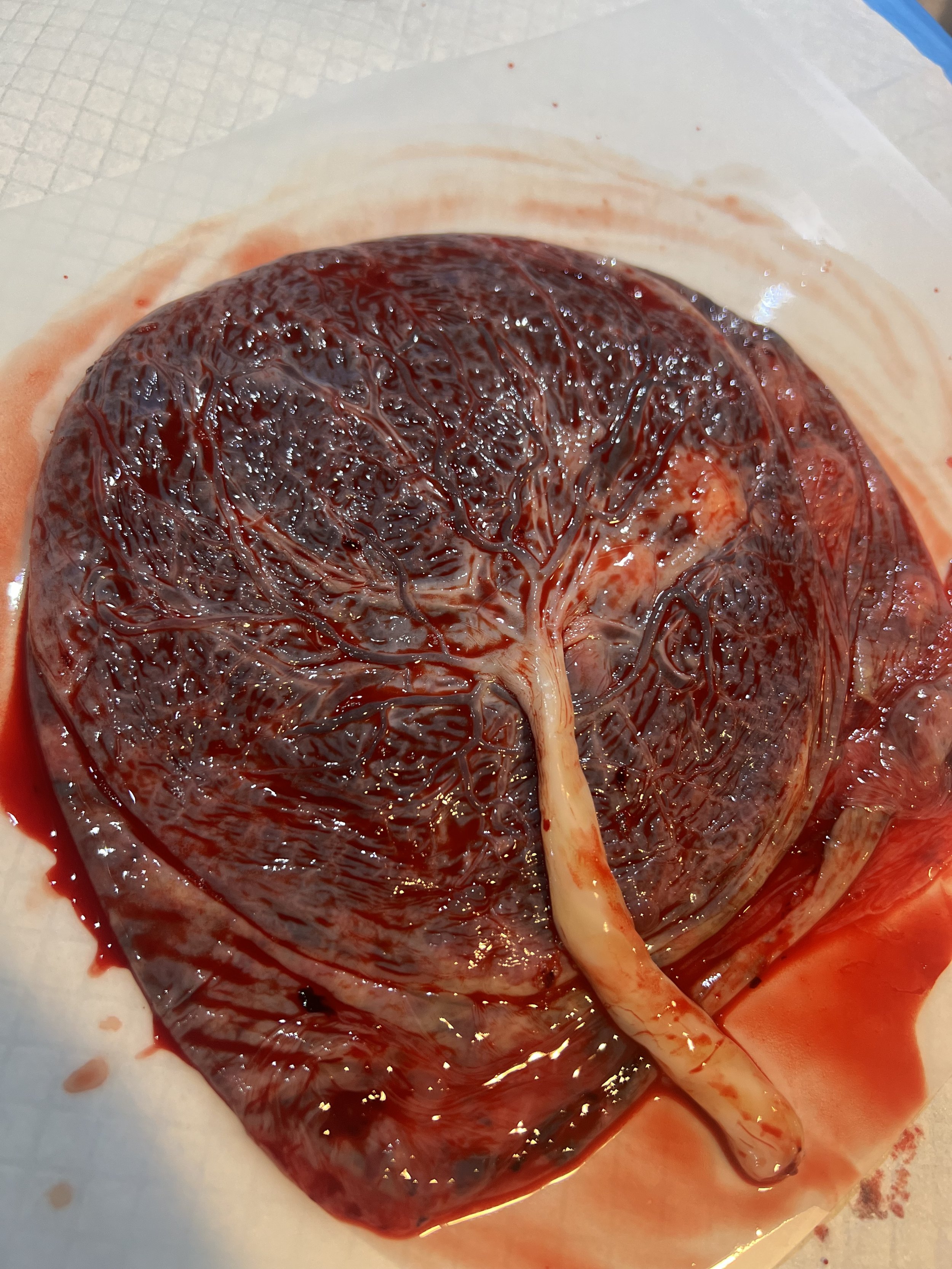The Placenta: Nature's Gift to New Life
Bringing a new life into the world is a momentous and transformative experience for mothers. As they embark on their postpartum journey, they are met with the joy of motherhood, but also with sometimes drastic physical and emotional changes.
In recent years, an ancient practice called Placenta Encapsulation has gained popularity among postpartum mothers seeking a natural and holistic approach to recovery after giving birth. The term “Placentophagy” refers to the actual consumption of the placenta after childbirth. The placenta can also be used to create tinctures and salves, but we’ll dive into that another time.
The placenta, often referred to as the "Tree of Life," is an incredible organ that develops specifically during each pregnancy. It acts as a vital connection between the mother and her developing baby, providing essential nutrients, oxygen, and hormones for optimal fetal growth. After childbirth, the placenta is usually discarded as medical waste, but some mothers are discovering an alternative path by choosing Placenta Encapsulation.
The Process
Placenta Encapsulation is the process of preparing the placenta for consumption in a convenient, safe, capsule form. The process generally involves the following steps:
Collection
o Shortly after birth, the placenta is collected and preserved in a sterile container, following strict hygiene guidelines. The placenta can be at room temperature for up to 4 hours, but it is best to be put on ice in a cooler or in a refrigerator.
o The placenta can also be frozen for up to 6 months with full retention of its nutrients and benefits
Preparation
o The placenta is thoroughly cleansed and examined for any potential abnormalities before the true process begins, and then we proceed with processing using one of two methods Raw or Steamed.
o Raw Method: The placenta is sliced into thin pieces and ready for immediate dehydration, this method retains the full amount of nutrients and volume of the placenta.
o Steamed Method: The placenta is steamed whole with natural ingredients such as lemon, ginger, or herbs. This method is inspired by and loosely follows what is known as the “Traditional Chinese Method”, based on the belief that giving birth leaves an opening in the body that is cold and steaming the placenta before dehydration warmth is added back to the body. This method does result in a loss of nutrients and approximately 1/3 of the placenta’s volume leading to possible fewer benefits and capsules.
Dehydration
o The prepared placenta is sliced into pieces and dehydrated at 165° for 18-24 hours, depending upon the size and thickness of the placenta and its prepared pieces.
Grinding and Encapsulation
o The dehydrated placenta is ground into a fine powder and then encapsulated into ready-to-consume capsules.
The Benefits
While the practice of Placenta Encapsulation is still relatively new in modern society, and experienced results vary with each mother, many postpartum mothers report experiencing several potential benefits, including:
· Hormonal Balance: The placenta is rich in hormones, including progesterone and oxytocin, which may help regulate postpartum hormonal fluctuations and promote emotional well-being.
· Increased Energy: Consuming the placenta is believed to aid in replenishing essential nutrients lost during childbirth, potentially reducing fatigue and promoting quicker postpartum recovery.
· Lactation Support: Some mothers find that Placenta Encapsulation supports milk production and a smoother breastfeeding experience.
· Mood Support: The placenta contains endorphins, which are known for their mood-boosting properties. Mothers may find relief from postpartum blues and mood swings.
· Enhanced Recovery: Advocates of placentophagy suggest that it may contribute to faster postpartum recovery and a smoother transition into motherhood.
Contraindications for Postpartum Mothers
While Placenta Encapsulation has garnered enthusiastic testimonials, postpartum mothers need to know that it is not suitable for all and be aware of certain contraindications before opting for this practice:
· Placenta Encapsulation is not recommended for individuals with infectious diseases including any form of Hepatitis or HIV.
· Placenta Encapsulation is not recommended if the mother or baby has an active infection during labor or within 24 hours of delivery.
· Placenta Encapsulation IS OKAY to proceed with if the mother is Group Beta Strep Positive (GBS+) or if there was meconium present during birth. The thorough process of cleansing, examining and dehydrating the placenta ensures that it is safe for consumption
· It’s essential to inform those processing your placenta of any medical conditions or concerns you may have before proceeding with the service.
Placenta Encapsulation offers postpartum mothers an alternative and natural approach to support their recovery and well-being after childbirth. For those who choose Placenta Encapsulation, the potential benefits may add to the joy and celebration of embracing motherhood and the journey of new life.



